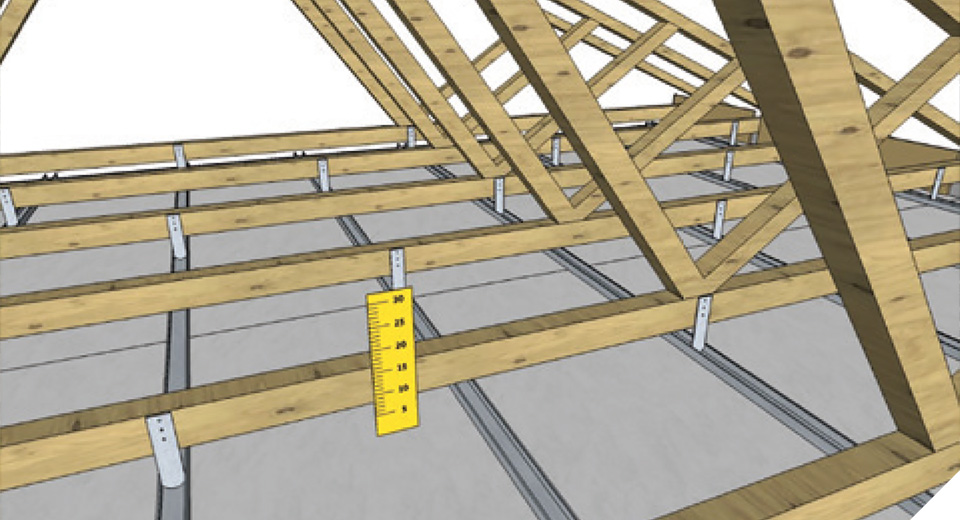Factsheet
Insulation of unused attics with blown-in insulation materials
Causing 30% of all heat loss in homes, the attic represents the largest source of heat loss in uninsulated or under-insulated houses. For comfort in every season and to save energy, it is thus crucial to use high-performance thermal insulation products. Close-up of a technique: loose fill insulation installed with a blower.

The process consists of using a pneumatic machine to blow loose fill insulation material into unused attic. The most commonly used material is mineral insulation, such as rock or glass wool, and biosourced materials such as cellulose wadding, cotton, lambswool, linen, hemp, etc.
Rules to follow
When insulation is blown over a plasterboard panel finishing with a timber or metal frame, compliance is required with the DTU (Unified Code of Practice) 25.41 regarding the maximum load of insulation materials depending on the type of insulation fixing, the spacing and the type of construction work being done, i.e. new build, complete renovation or insulation of an existing ceiling.
Extra care must be taken when there are heat sources, such as a chimney smoke duct , a recessed spotlight, unprotected electrical equipment, etc. Installers must refer to the CSTB guideline no. 3693_V2 of June 2015, DTU 24.1 P1 and the Technical Approvals of the relevant products.
Thermal resistance: how to achieve the targeted performance
Once applied, the thickness of loose filled insulation can settle (S) over time due to variations in temperature and humidity. Because the thermal resistance is proportional to this thickness, the efficiency of the insulation decreases. Thus, it is important to take this phenomenon into account when installing the insulation, in order to achieve the energy savings expected by the project owner.

The ACERMI certification determines the settling class (SH) and the thermal conductivity of the product, so that its useful thermal resistance after settling can be calculated. Thus, in order to attain a given thermal resistance, for each certified product, ACERMI certifications indicate the thickness to be installed and thus the amount of product needed, also called the “insulating capacity.”
On-site, insulation installers can refer to the information contained in the ACERMI certificate. Knowing the weight of a bag and the surface area to be insulated, they can calculate the number of bags needed to reach the targeted performance.
Furthermore, this data (product reference, insulated surface area, installed thickness, surface density and number of bags used) must be indicated by the installer on a worksite data sheet, which comprises the key document of the agreement between the project owner and the insulation installer.





